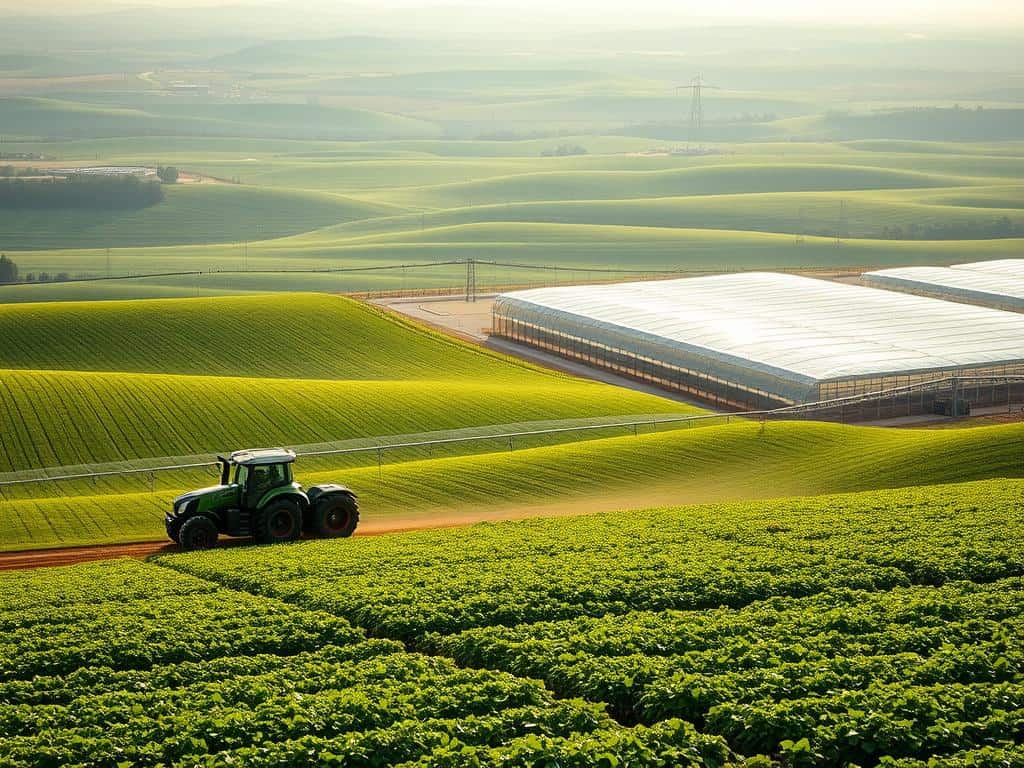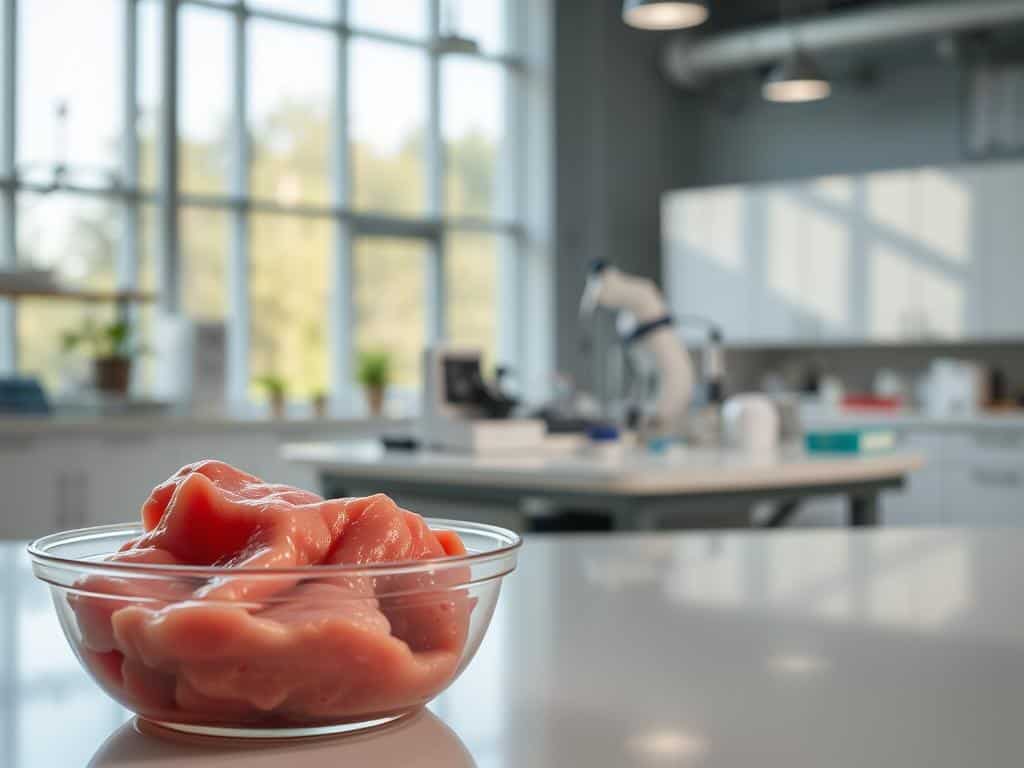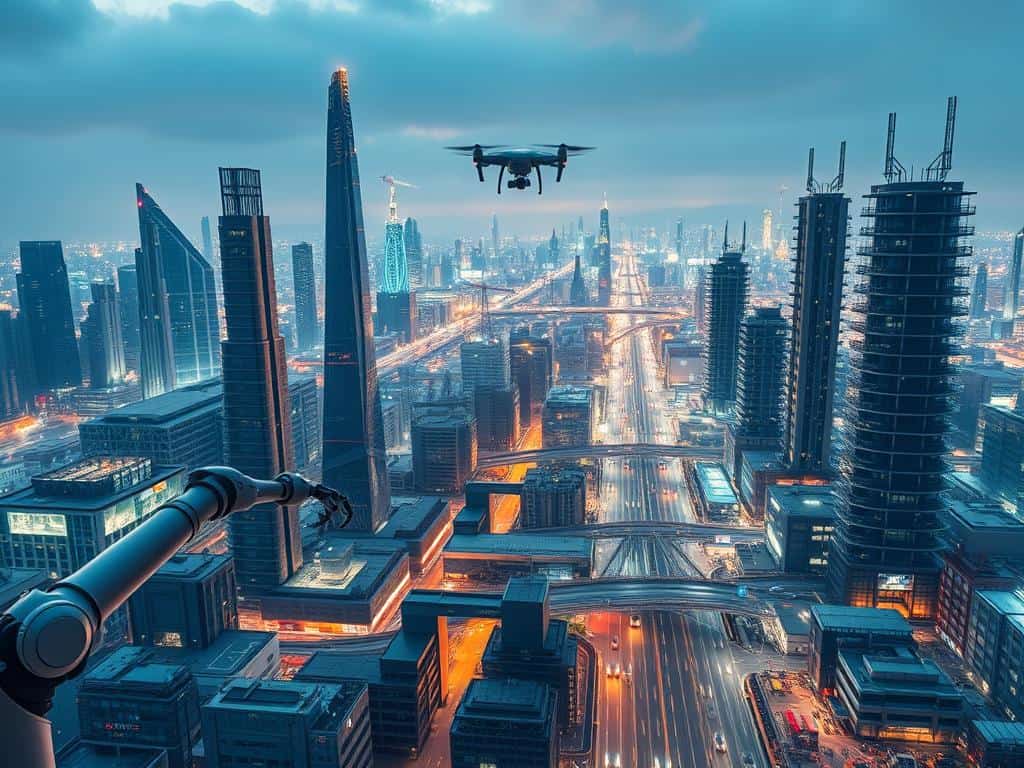Did you know the global market for agricultural robotics was nearly $5 billion in 2022? This shows how fast farming is changing with new tech. We face big challenges like urban growth, climate change, and more people needing food. New smart farming and agrotech ideas are changing how we grow food.
By using the latest tech with old ways, we can use less and grow more. This helps us be kinder to our planet and make sure everyone has food.
In the next parts, I’ll look at ten amazing farming innovations. These include automation, robotics, and precision farming. They promise to make farming better and change how we see food and nature.
Key Takeaways
- The agricultural robotics market reached nearly $5 billion in 2022.
- Smart agriculture techniques significantly reduce resource waste and enhance productivity.
- Geographic Information Systems (GIS) are improving crop management decisions.
- Automation technologies, such as drones, are optimizing farming efficiency.
- Precision agriculture employs advanced data analytics for smarter farming practices.
Understanding the Need for Innovation in Farming
The world of farming is changing fast because of many factors. One big issue is the growing population, which means more people need food. With the global population set to hit 9.7 billion by 2050, old farming ways won’t be enough.
We need new, green ways to farm. This change is urgent to meet the food needs of our growing world.
The Growing Global Population
More people mean we need to find ways to grow more food. But, as cities grow, there’s less land for farming. New farming tech is key to solving this problem.
Technologies like satellite mapping and soil sensors help farmers. They use these tools to use less water and chemicals. This way, they can grow more food while saving resources.
The Impact of Climate Change
Climate change adds to the challenge of feeding the world. Weather changes and less water make farming harder. But, there are new ways to farm that can help.
Indoor vertical farming uses much less water. It’s a green way to farm, even in tough environments. Also, closed-loop systems recycle water. This cuts down on the need for fresh water.
Cutting-Edge Technologies Revolutionizing Agriculture
In today’s fast-changing world of farming, new technologies are making a big difference. They help farms work better, use resources wisely, and care for the environment. I’ve seen how these new tools, like farm automation and data analysis, are changing farming.
Farm Automation and Robotics
Farm automation is changing how we farm. Robots and automated tools, like self-driving tractors, are doing jobs that used to need a lot of people. For example, the PTx Trimble OutRun™ Autonomous Grain Cart Solution helps farmers deal with a lack of workers. It makes grain handling more efficient, which is key during harvest time.
Geographic Information Systems (GIS)
GIS technology is key in modern farming. It helps farmers make decisions based on detailed location data. This tool lets farmers look at over 80 different data points to manage their farms better. I’ve seen how it helps farmers use resources well and make smart choices.
GIS also lets farmers check on large areas easily. They can get data from satellites to see how crops are doing and the environment. This gives farmers a clear view of their farms, helping them improve.
Precision Agriculture
Precision farming is leading the way in new farming methods. It uses advanced data analysis to boost crop yields by up to 20%. For example, the Precision Planting ReconBlockage™ Sensor helps farmers avoid losing crops, saving time and money.
It also helps farmers use less fertilizer and water without losing crop quality. This is important as the world’s population grows and needs more food.

Smart Agriculture: Harnessing Data for Sustainable Farming
In agriculture, new tech is key for better farming and more food. Smart farming uses data and AI to help farmers. This makes farming more efficient and helps farmers make better choices.
Artificial Intelligence and Machine Learning
AI and machine learning change farming for the better. They help with growing crops, controlling pests, and spotting diseases. They also predict the weather, which is very important for crops.
These tools use advanced math to help farmers use resources well. This way, they get more food without harming the environment.
Internet of Things (IoT)
IoT makes farming smarter by collecting data all the time. It watches over fields, checking on moisture and crop health. This helps farmers know exactly what their crops need.
Systems like Lumo’s show how smart sensors can save water. With IoT, farming is getting more automated. This means farming can be more productive and kinder to the planet.
Conclusion
As the world’s population grows, reaching 9.7 billion by 2050, we need smart agriculture. Advanced technologies like AI, robotics, and IoT are key. They help make farming better and ensure we have enough food.
Investing in new farming tech is vital. For example, the USDA is using $900,000 to support sustainable farming. Smart irrigation and precision farming save resources, making our food system stronger.
In the end, smart agriculture is the way forward. It improves how we use resources and grow food. With these technologies, we can make farming better for the future, keeping our food systems healthy and green.



